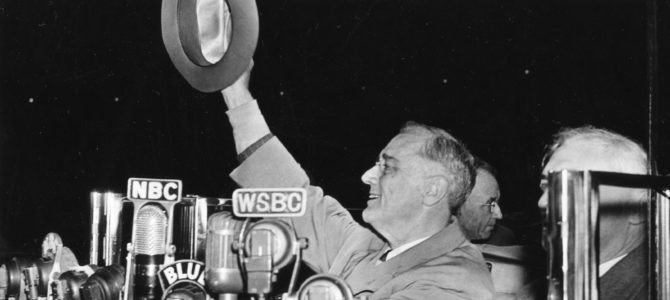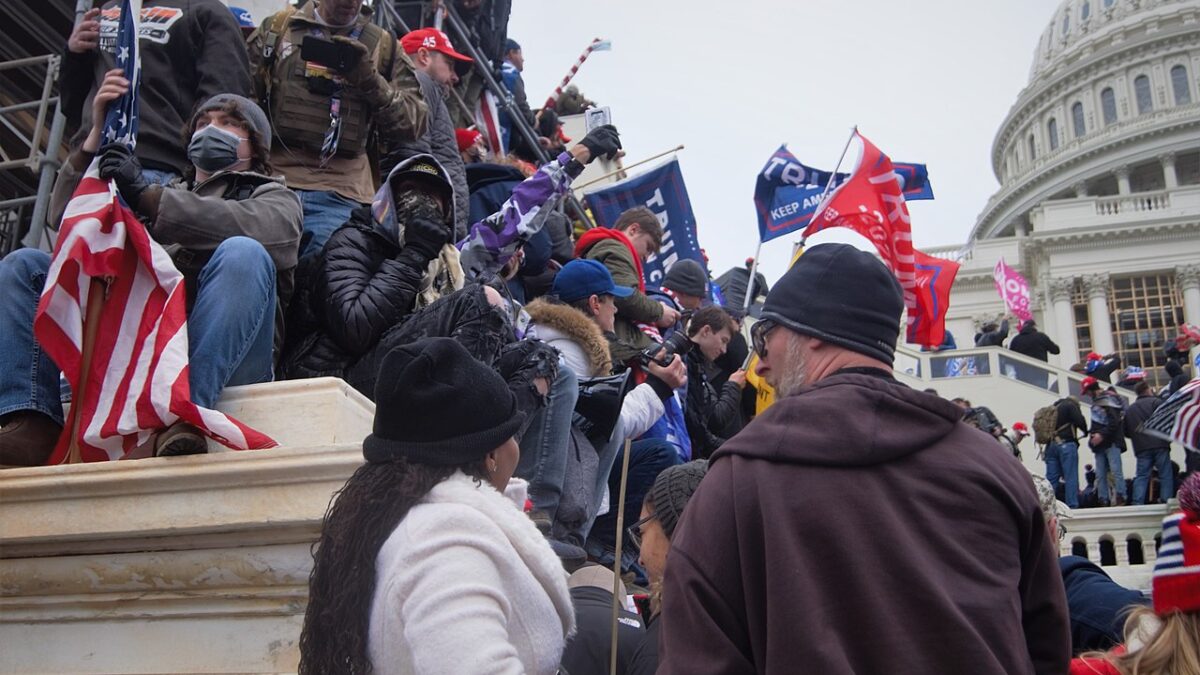
If the Senate dares to vote on President Trump’s nomination of Amy Coney Barrett, John F. Kennedy’s grand-nephew is ready to pack the Supreme Court.
If he holds a vote in 2020, we pack the court in 2021.
It’s that simple.
— Joe Kennedy III (@joekennedy) September 19, 2020
Kennedy isn’t alone in his threat. Democratic Party leadership, including Speaker of the House Nancy Pelosi, Senate Minority Leader Chuck Schumer, and House Judiciary Committee Chairman Jerry Nadler, have either implied or expressly insisted that congressional Democrats add justices to the court. The goal would be to use the court as another way to push their policy preferences on Americans.
This isn’t the first time Democrats have suggested this. In the 1930s, Democrat President Franklin D. Roosevelt pushed a proposal that would have let him appoint six new justices to the bench, flipping the makeup of the court. The measure failed, and some have argued that it seriously damaged Roosevelt’s political capital.
The Hughes Court And The New Deal
In 1937, Roosevelt was riding the wave of his New Deal. He had tried to provide jobs through the Civilian Conservation Corps and the Works Progress Administration. He tried to revitalize labor and industry through the National Labor Relations Board and the National Recovery Administration. Most famously, he introduced Social Security programs to displace private provision for the elderly, the unemployed, and the disabled. But one thing stood in Roosevelt’s way: a Supreme Court that found everything he wanted unconstitutional.
Justices Van Devanter, Butler, McReynolds, and Sutherland — all conservatives in their 70s — were nicknamed the “Four Horsemen” and made up the constitutional bloc on the court. As Roosevelt noted in one of his “fireside chats” in March 1937, the Supreme Court struck down New Deal programs like Roosevelt’s Agricultural Adjustment Administration and his Railroad Retirement Act because the Constitution does not authorize the federal government to use such powers.
To get around the court, Roosevelt introduced the Judicial Procedures Reform Bill of 1937, which would have allowed him to appoint a new justice for every current justice older than 70, up to six justices. All four constitutional justices were in their 70s, as well as liberal justices Louis Brandeis and Chief Justice Charles Evan Hughes. Accordingly, Roosevelt would be able to appoint a full six additional justices and have a majority on the court.
Roosevelt’s public discussion of the plan showed that his purpose was purely political. During his successful run for re-election in 1936, Roosevelt had criticized the Supreme Court. In his Fireside Chat in March 1937, Roosevelt blamed it for having “improperly set itself up as a third House of the Congress.”
“We have reached the point as a Nation where we must take action to save the Constitution from the Court and the Court from itself,” Roosevelt insisted. He admitted that one purpose of the plan was to “make the administration of all Federal justice speedier” — to make more efficient a system whose balance of powers was designed to be inefficient.
Roosevelt insisted the court was stepping outside its role by striking down policies that Congress had passed. He accused the court of “overrid[ing] the judgment of the Congress on legislative policy” when it struck down New Deal legislation as unconstitutional. On the contrary, originalists insist this is the court’s intended job.
“What would be the purpose of the Supreme Court, if the expectation was that if two branches of govt believe one thing then the Supreme Court is expected to believe the same thing?” says constitutional lawyer and professor of government Dr. Jesse Merriam.
The President’s Proposal
The Judicial Procedures Reform Bill of 1937 sparked controversy and never left its committee in Congress. The administration failed to confer with congressional leadership in proposing the bill, so the chairmen of the House and Senate Judiciary Committees both let it falter. Texas Rep. Hatton W. Sumners and Arizona Sen. Henry Ashurst, both Democrats, refused to push Roosevelt’s bill through committee to a floor vote.
Ultimately, Roosevelt never needed to push through his court-packing plan to get what he wanted. Some have suggested that the threat of court-packing was enough to scare the Supreme Court into going along with Roosevelt’s New Deal policies that appropriated federal powers that the Constitution does not authorize.
The court started reversing itself on Roosevelt’s New Deal. In cases like National Labor Relations Board v. Jones & Laughlin Steel Corp. in 1937, for example, the court began to adopt a broad view of the federal government’s power to regulate commerce, in defiance of its earlier decisions in United States v. E. C. Knight Company in 1895 and Hammer v. Dagenhart in 1918. Historians refer to this change as the “switch in time that saved nine,” since it helped ensure no additional justices were added to the court.
Additionally, all of the “four horsemen” on the court resigned or died in the years following. Justice Willis Van Devanter retired in June 1937, less than two months after the court decided the Jones & Laughlin case. George Sutherland retired in January 1938. The other two, Pierce Butler and James McReynolds, had either died or retired by early 1941.
Several of the liberal justices on the court also died or retired during Roosevelt’s presidency, leaving him to appoint eight justices during his 12 years in office. (After George Washington, no other president has made so many appointments to the Supreme Court.)
Although Roosevelt never went through with his court-packing plan, it injured his political power, at least temporarily. “It drained his political capital to some degree,” says Dr. Michael Haynes, chairman of the Government Department at Patrick Henry College. “He would have been more seriously damaged had WWII not developed, which empowered him greatly.”
Is There Precedent For Court-Packing?
Roosevelt’s plan wasn’t inherently illegal — the number of justices on the court had fluctuated before. After President John Adams lost his re-election bid to Thomas Jefferson, the Adams-friendly Congress enacted the Judiciary Act of 1801, shrinking the Supreme Court from six justices to five in an attempt to deny Jefferson a nomination. (Congress repealed the bill the next year, after Jefferson took office.)
By the time Abraham Lincoln had assumed the presidency, there were nine justices on the bench. Through the Tenth Circuit Act of 1863, Congress added a tenth circuit to include California and Oregon, and likewise added a tenth justice to the Supreme Court.
Three years later, the Judicial Circuits Act of 1866 authorized the gradual reduction of the Supreme Court to seven justices. Finally, the Judiciary Act of 1869 increased the court to its present size.
Although court-packing isn’t constitutionally prohibited, Roosevelt’s example shows its potential to backfire, especially when reform is motivated purely by partisan politics.
“Each attack on the court delegitimizes it — it’s a very dangerous game,” Merriam says.
If Democrats pack the court, Haynes adds, “the courts will lose the last bit of respect they have, because the presidency doesn’t have respect right now, and Congress has no respect. I think it will be hard to sell that as a good idea to the American public.”
Haynes doesn’t think there are enough votes in Congress to push any actual court-packing plan through, as Kennedy has suggested. “I’m hoping there aren’t,” he says. “If there are, then institutions mean nothing anymore.”
Democratic presidential nominee Joe Biden can’t make up his mind. In October 2019, Biden condemned the idea, insisting it would “begin to lose any credibility the court has at all.” Now, he’s simply refusing to take a stance on the issue. “It’s a legitimate question,” he said last week before declining to answer it.









